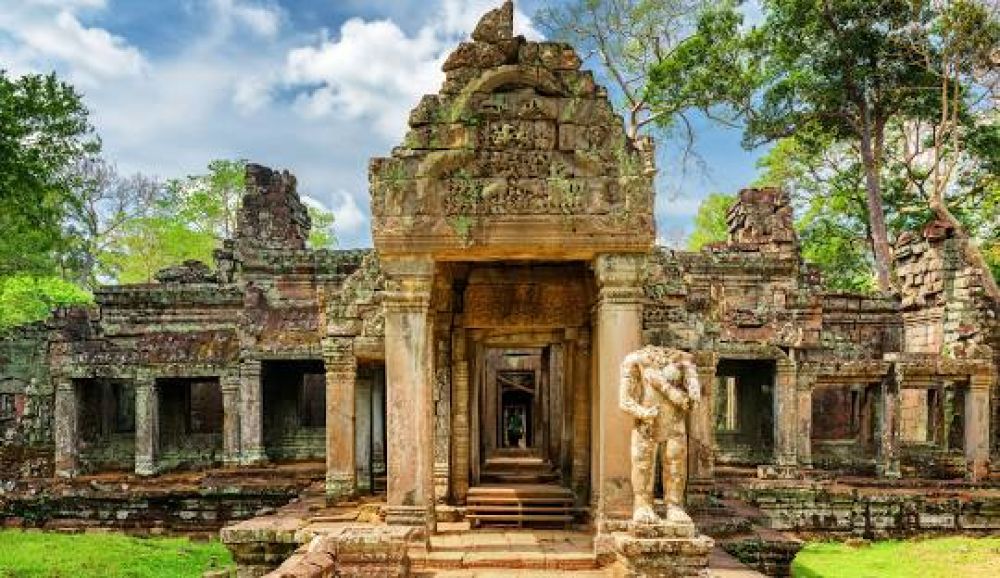

Phnom Bakheng is one of the most significant archaeological sites in the ancient city of Angkor, located near Siem Reap in Cambodia. The history of tourism at Phnom Bakheng is closely tied to the broader discovery and exploration of the Angkor region by the Western world.
The initial waves of Western visitors to Angkor came during the mid-19th century when the French explorer Henri Mouhot popularized the site with his writings, likening it to discovering an Eastern equivalent of the great civilizations of Rome or Greece. This comparison captivated the imagination of European scholars and adventurers, despite Mouhot not being the first Westerner to visit the site.
During the late 19th and early 20th centuries, the French colonial administration in Indochina took a keen interest in the Angkor Complex. It was during this period that the École Française d'Extrême-Orient (EFEO) was created, which began a long and extensive project of clearing, conserving, and restoring the ancient temples, including Phnom Bakheng. This work not only preserved the monument but also made it more accessible to visitors.
As the archaeological sites became safer and more accessible, Siem Reap began to grow as a tourist destination. The construction of the Grand Hotel d'Angkor in the 1920s provided accommodation for the more affluent visitors, signaling the birth of modern tourism in the area.
The region faced a significant decline in tourism during the periods of civil war and the reign of the Khmer Rouge in the latter half of the 20th century. Phnom Bakheng, along with the rest of the Angkor sites, became off-limits due to safety concerns.
Following the stabilization of Cambodia in the 1990s, tourism in Siem Reap and Phnom Bakheng experienced a renaissance. UNESCO listed the Angkor Archaeological Park as a World Heritage site in 1992, catapulting it to the top of global must-visit lists and sparking a consistent increase in international tourism.
In recent years, Phnom Bakheng has become famous for its sunset views, leading to large amounts of visitors ascending the temple during the late afternoon. To protect the integrity of this 10th-century temple and enhance the visitor experience, the APSARA Authority who manages the park has implemented a ticketing system that limits the number of sunset viewers.
Eco-friendly and sustainable tourism practices are also becoming increasingly important, with an emphasis on balancing the preservation of the site with the needs of the local population and tourism industry.
As an ongoing trend, many tourists combine a visit to Phnom Bakheng with a deeper exploration of the surrounding Angkor temples, taking part in cultural tours, visiting local villages, and participating in conservation efforts. The region is continually developing new experiences to educate visitors not only about the historical significance of the temples but also about the vibrant culture of modern Cambodia.
From its rediscovery in the 19th century to its current status as a premier travel destination, Phnom Bakheng's history of tourism reflects a journey of rediscovery, conservation, and cultural appreciation. With the continuous evolution of visitor management and sustainable practices, the tourism industry in Siem Reap aims to safeguard this majestic site for future generations.